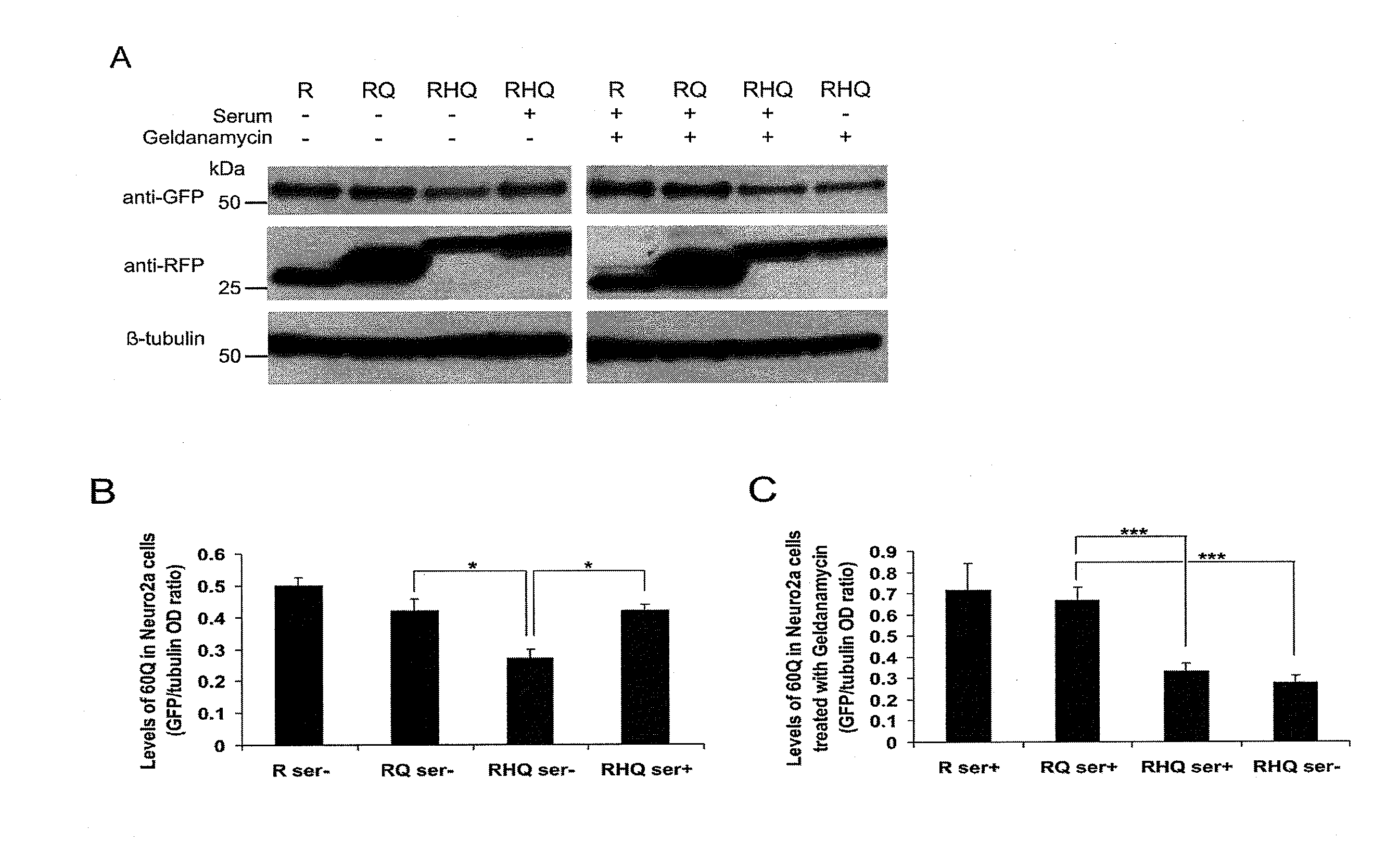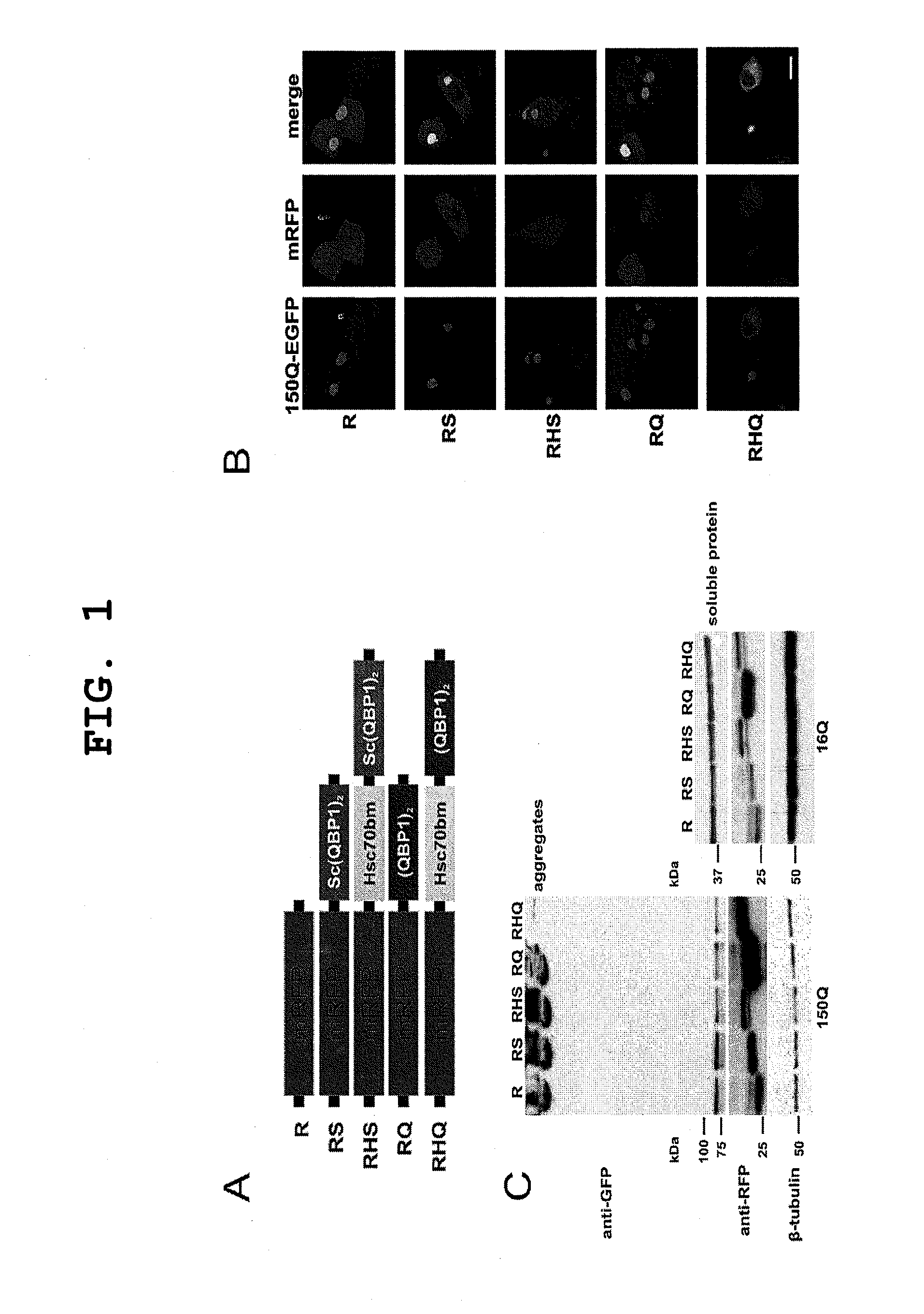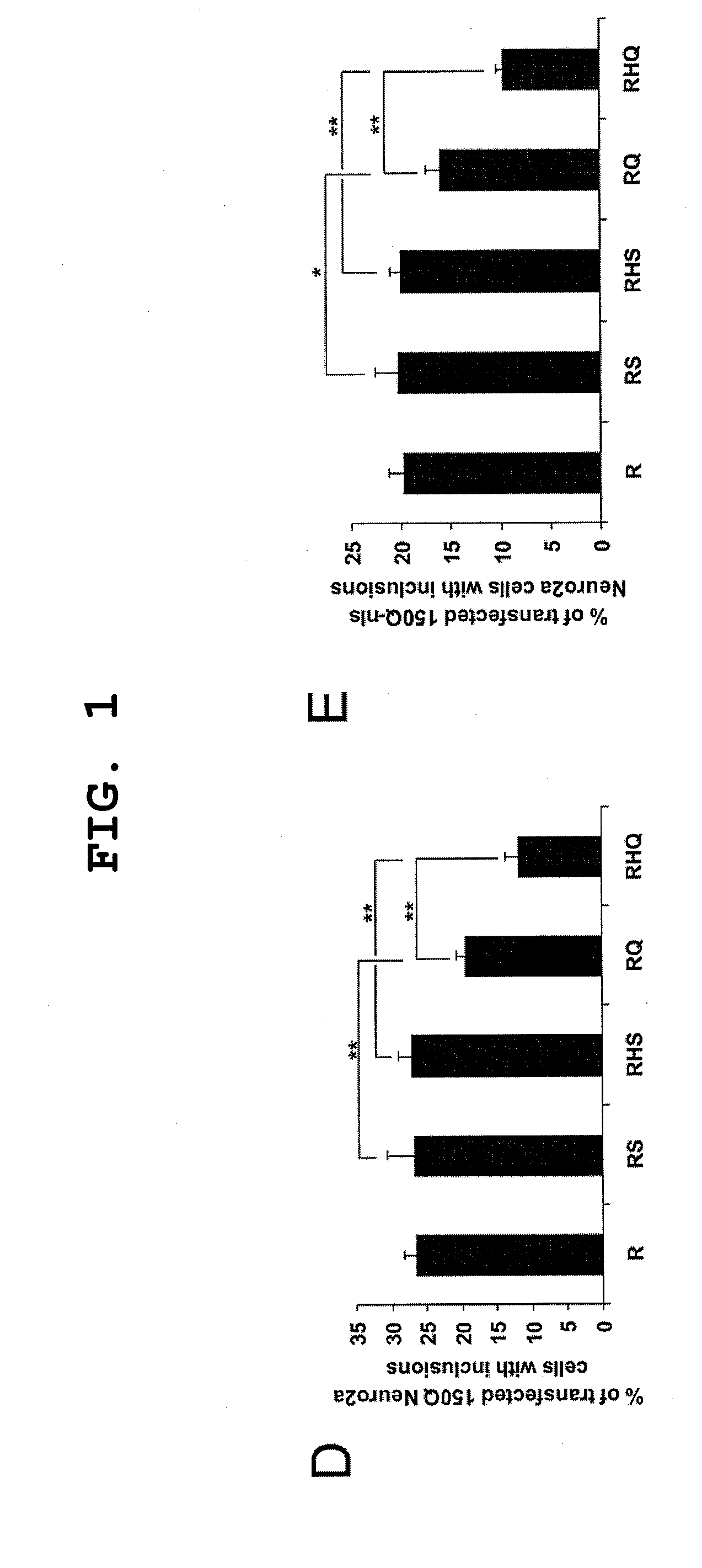Method of degrading protein by chaperone-mediated autophagy
- Summary
- Abstract
- Description
- Claims
- Application Information
AI Technical Summary
Benefits of technology
Problems solved by technology
Method used
Image
Examples
example 1
[0109]Effect of HSC70bm and (QBP1)2 on Aggregation of polyQ and polyQ-Related Cytotoxicity
[0110]The present inventors introduced two HSC70 binding motifs (HSC70bm) into truncated N-terminal htt with 60Q-Venus (60QHsc) (FIG. 5A) and expressed 60Q and 60QHsc in PC12 cells (FIG. 5B). The constructs containing the HSC70bm generated fewer aggregates and this decrease was more pronounced when autophagy was activated by serum withdrawal (FIG. 5C). Blocking lysosomal proteases cathepsin D and E by pepstatin A alleviated the effect of HSC70bm while macroautophagy inhibition by 3-methyladenine (3MA) did not (FIG. 5D). Interestingly, the inhibition of cathepsin A that negatively regulates Lamp2a levels (see, A. M. Cuervo, et al., EMBO J 22, 47 (2003)), accentuated the difference in aggregation between 60Q with and without HSC70bm (FIG. 5D). These data suggested that the presence of HSC70bm enhanced the degradation of expanded polyQ protein by CMA. The present inventors therefore decided to inv...
example 2
[0111]Molecule Comprising HSC70bm and (QBP1)2 (RHQ) Enhances polyQ Degradation
[0112]Next, the present inventors examined the mechanistic platform for the enhanced inhibition of the polyQ aggregation by RHQ. It has been shown that QBP1 inhibits toxic conformational transition of the expanded polyQ stretch, which is thought to be a trigger for polyQ protein oligomerization and aggregation (Y. Nagai et al., Hum Mo, Genet 12, 1253 (2003), Y. Nagai et al., Nat Struct Mol Biol 14, 332 (2007)). This probably leads to enhanced accessibility of the mutant protein to degradation systems. Since the addition of HSC70bm intensified the effect of (QBP1)2 on polyQ aggregation and protein levels, the present inventors examined and compared the rate of degradation by RQ and RHQ. The present inventors performed a chase experiment using 60Q Neuro2a cells and found that RHQ enhanced the degradation of the soluble tNhtt-60Q protein by 43% as compared to R and by 37.4% as compared with RQ after 24 hours ...
example 3
[0113]RHQ Targets polyQ to Lysosomes
[0114]To investigate whether the (R)HQ targets the polyQ to lysosomes, the present inventors co-transfected HQ or other constructs with 16Q-EGFP or 150Q-EGFP to Neuro2a cells for 16 hours. In the cells expressing 16Q-EGFP, none of the co-transfected constructs had any effect on the subcellular distribution of the green fluorescence (FIG. 2C). On the other hand, when 150Q-EGFP was co-expressed with HQ, fluorescence intensity decreased, redistributed and partly co-localized with the lysosomal marker Lysotracker-rhodamine (FIG. 2D). To confirm this observation, the present inventors co-transfected the tested constructs with tNhtt-60Q to Neuro2a cells, 16 hours later purified intact lysosomes and analyzed them for the presence of the polyQ protein. The present inventors observed a marked shift of soluble 60Q protein toward the lysosomal fraction of the cell lysates (FIGS. 2,E and F). These results suggested the efficient translocation of expanded poly...
PUM
| Property | Measurement | Unit |
|---|---|---|
| Conformational barrier | aaaaa | aaaaa |
Abstract
Description
Claims
Application Information
 Login to View More
Login to View More - R&D
- Intellectual Property
- Life Sciences
- Materials
- Tech Scout
- Unparalleled Data Quality
- Higher Quality Content
- 60% Fewer Hallucinations
Browse by: Latest US Patents, China's latest patents, Technical Efficacy Thesaurus, Application Domain, Technology Topic, Popular Technical Reports.
© 2025 PatSnap. All rights reserved.Legal|Privacy policy|Modern Slavery Act Transparency Statement|Sitemap|About US| Contact US: help@patsnap.com



